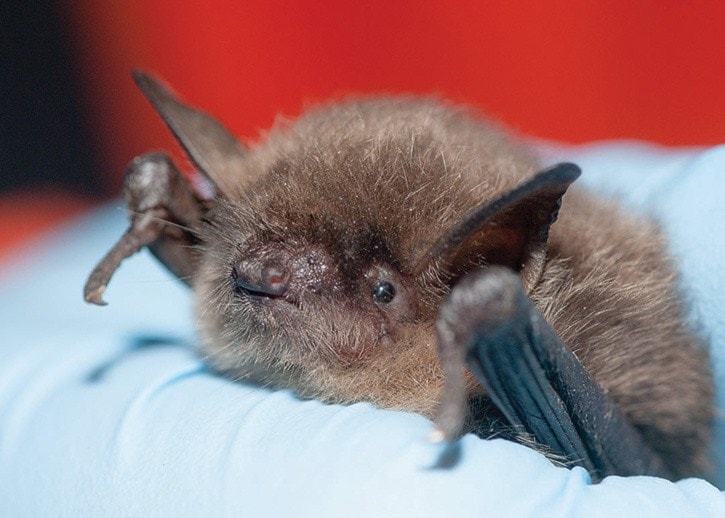Along Loss Creek, southeast of Port Renfrew, you can see hundreds of them, if not thousands, at dusk. As the twilight sky darkens they blend into the darkness only to reappear the same time the next day.
Where bats roost and keep hidden during the day in a large swath of land between Sooke and Port Renfrew is a mystery to researchers.
Researchers say they know “almost nothing” about the local bat population.
“No one, as far as we know, has any information on the bats in that area,” said Jill Robinson, stewardship coordinator for the Habitat Acquisition Trust’s bat stewardship program.
And it’s a troubling phenomenon.
Of the 16 species of bats in B.C., over half are red or blue-listed, meaning that their populations are declining and they could become endangered.
The B.C. Community Bat Project Network was established in many regions of B.C. in 2014 to support bat conservation. The goals are to raise awareness about bats, provide information to homeowners dealing with bat issues in buildings, promote the installation of bat-houses, and develop a citizen science program to monitor bat populations.
Bats are an incredibly valuable part of our ecosystem. They play an important role in controlling insect populations, pollinating flowers and dispersing seeds and yet, we know very little about them.
“Identifying where they are living will give us a better idea on how we can protect their habitat and more about what’s limiting in their habitat,” said Robinson.
“We need to know as much as we can about local populations, not just about where they are in the summer but in winter too.”
One concern for researchers is white-nose fungus that has decimated bat populations in Eastern Canada and is moving west. The disease, which ends up suffocating, the bat, is expected to reach here within 10 years.
Researchers aren’t sure why more isn’t known about bats between Sooke and Port Renfrew.
In other parts of the Island, the Bat Stewardship Program has received numerous calls from residents who have seen large numbers of bats, have seen a bat fly into their house, or have discovered a bat roosting in an unusual location.
“This is the time of year when the juvenile bats are learning to fly and they not very good at it” said Juliet Craig, biologist and coordinator of the B.C. Community Bat Projects Initiative.
“They fly into houses or fall on the ground and have difficulty getting up again.”
Baby bats, also called pups, are born in late June and July. In this unusually warm summer, pups have already been flying for a few weeks. In August, they will be flying on their own and learning to forage.
If a bat is hanging or roosting in a strange location, such as under a patio umbrella, it is likely a juvenile and it’s best to leave it where it is, said Robinson.
“A bat on the ground does not necessarily mean that it is injured or sick, it may just be a juvenile that has had trouble flying.”
Bats are usually not capable of propelling themselves up and off the ground. Generally, they crawl to a wall or tree, climb up it, and then swoop down to fly away.
Funded primarily by the Habitat Conservation Trust Foundation and supported by the B.C. Conservation Foundation, Habitat Acquisition Trust is soliciting information from the public on where bats roost, providing site visits and advice to residents with bats in buildings, and requesting help from the public to act as “citizen scientists” to help count bat populations.
You can help by providing HAT with any information about bats in your area. If you find a bat at your house or see several flying around, you may be living near an important roost site. Contact HAT to report your sightings and learn more about bats in your area.
For more information about bats, go online to hat.bc.ca or call 250-995-2428.
